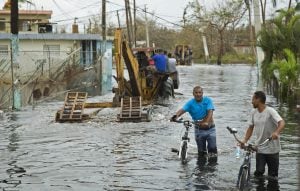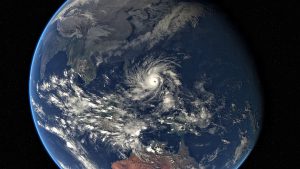For campaigners taking legal measures to force urgent action on the climate emergency, December 2019 marked a high point. Judges in the Dutch Supreme Court ordered the government to reduce greenhouse gas emissions immediately. This was the first time citizens had established that their government had a legal duty to prevent dangerous climate change.
The historic judgment has forced the Dutch government to close coal plants that had only opened in 2015, lower the highway speed limit to 100km/h, and step up enforcement of corporate energy efficiency regulations, according to Dennis van Berkel, legal counsel at Urgenda, the campaign group that brought the case. Not only that, it inspired similar legal action around the world, including in Australia, Canada, Colombia and South Korea.
However, 2020 has ended less positively for campaigners. The Norwegian Supreme Court ruled in favour of the state’s granting of new licences for oil exploration in the Arctic. The case had been brought by Greenpeace Nordic and youth organisations, which argued that oil exploration violated the state’s obligation to implement its citizens’ right to a safe and healthy environment.
The court upheld a lower court’s ruling that the Norwegian constitution should protect citizens from climate harms created by burning exported oil. However, it declined to enforce that right against an oil exploration licensing scheme that had been authorised by the country’s parliament.
The court did state that emissions would have “great weight” in any future decision about the production of newly discovered oil and that the authorities would have the “right and duty” to deny production licences if granting them violated the constitutional right to a healthy environment.
“The court’s decision shifts the legal burden back to the government to seriously address the climate impacts of oil exports in any future production licensing,” said Carroll Muffett, president of the US-based Center for International Environmental Law. She said this could add to the risk of stranded assets for oil companies.
Daniel Metzger, a climate law fellow at the Sabin Center for Climate Change Law at New York’s Columbia Law School, said the case highlighted one of the challenges of climate litigation: courts are reluctant to issue a judgment that would interfere with the authority of government or legislative bodies.
However, in July, the Supreme Court of Ireland did just that, quashing the centrepiece of the Irish government’s climate mitigation policy because it failed to specify how the government would achieve the objectives set by the 2015 Climate Act. David Boyd, UN Special Rapporteur on human rights and the environment, described the case as a landmark.
Van Berkel said the case highlighted that governments could not just make “lofty and faraway targets” without taking short-term action.
The Norwegian case is also an example of a growing trend for cases that are brought by young people and based on human rights. Metzger suggests that youth plaintiffs could be more successful in winning cases. “Though the same kinds of problems that have caused other cases to stumble will also come up in these, the narrative is a lot more compelling when you’re talking about youth, especially those in developing countries where the effects of climate change are going to be the worst.”
Another trend is for legal action to be taken against large fossil fuel companies, the 47 so-called carbon majors. These cases are based on the science of attribution. The field has evolved such that impacts including sea-level rise, melting permafrost and ocean acidification can now be attributed to anthropogenic climate change with high confidence, according to a paper by the Sabin Center. Once the attribution of the impact has been established, it can also be attributed to specific emission sources on a proportional basis.
This trend of using litigation against carbon majors will continue to grow as the science of attribution strengthensLouise Fournier
Louise Fournier, Greenpeace International’s litigation counsel for climate justice and liability, pointed to a major case in the Philippines as the first such case of this type against the carbon majors. It was launched by the Philippines Commission on Human Rights (CHR) following a 2015 complaint by Greenpeace Southeast Asia and survivors of Typhoon Haiyan – one of the most powerful ever recorded. They wanted an investigation into the possible human rights violations of the carbon majors resulting from climate change.
The CHR said in its initial opinion in December 2019 that these companies could be found legally and morally liable for the harm. It added that there may be grounds to hold companies accountable under civil and criminal laws because companies continued to extract and market fossil fuels despite knowing the harm. A final resolution is likely at the beginning of 2021, according to Fournier.
“The impact of this resolution will be huge, and a precedent for other corporate accountability cases around the world. It’s an example of how this trend of using litigation against carbon majors will continue to grow as the science of attribution strengthens,” she said.
Related to this, Fournier has noted a huge amount of collaboration across disciplines in the past year. “There have been really clear efforts from legal scholars, climate scientists, and campaign groups and civil society movements to make these scientific findings more accessible to convince courts to attribute specific climate-related events to individual emitters.”
For example, the Union of Concerned Scientists launched an online hub in August that seeks to connect experts “working at the intersection of science and climate litigation”.
Another case pending a decision is that of Peruvian farmer Luciano Lliuya against RWE. Lliuya says that the citizens of his nearby town of Huaraz are faced with significant costs of flood protection due to melting mountain glaciers and that the German electric utility should pay 0.47% of these costs – matching its estimated contribution to industrial global greenhouse gas emissions since the beginning of industrialisation.
The significance of any win could be huge, said Metzger. “Up to now, we’re not aware of a single case where a court has ordered a private party to pay damages to someone else for climate harms. If that happens, I think we’ll see a flurry of similar litigation filed all over the world.”
He added: “Attribution science has advanced tremendously in the past five or 10 years, it’s an area that’s going to see more and more attention.”









